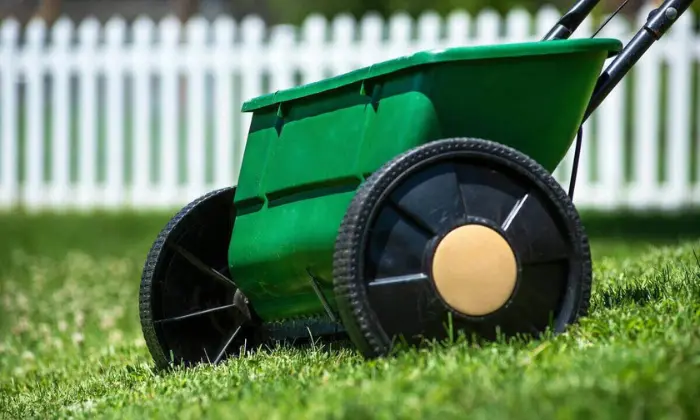How to Overseed a Lawn in Spring is a fundamental practice in lawn care where new grass seed is spread over an existing lawn. This process helps rejuvenate and thicken the grass, improving its overall health and appearance. By introducing fresh grass seed, overseeding fills in bare patches, enhances lawn density, and promotes a lusher, greener lawn. This article will guide you through the process of overseeding your lawn in spring, ensuring a vibrant and healthy lawn throughout the season.
What is overseeding?
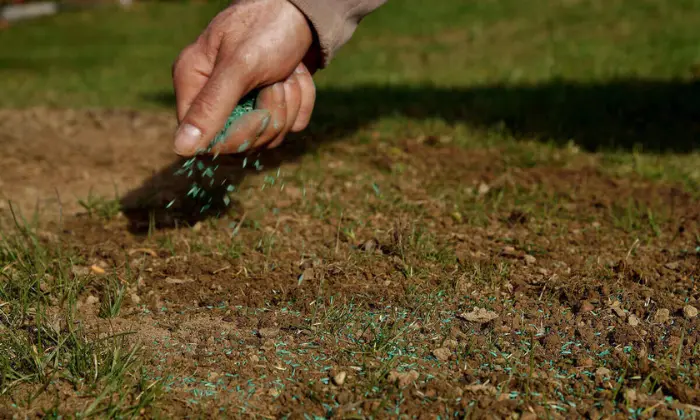
How to Overseed a Lawn in Spring Overseeding grass is a lawn practice that involves spreading Kentucky bluegrass seed over an existing lawn. This process is done to promote thicker turf, fill in bare spots, and improve the overall year to oversee health and appearance of the lawn. By introducing new grass seed to existing turf, overseeding grass helps rejuvenate the lawn and encourage healthy grass roots growth.
When is overseeding necessary?
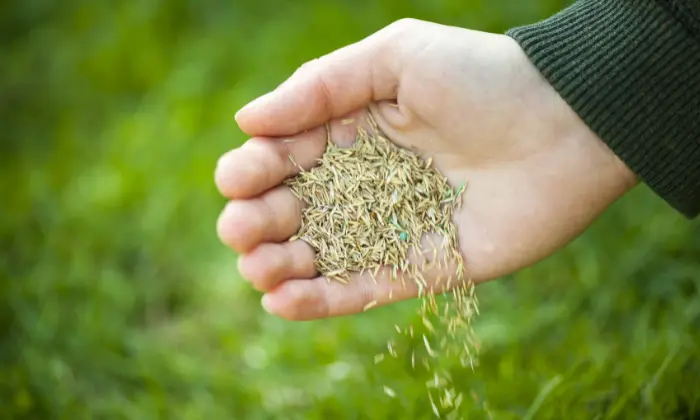
Overseeding grass is necessary When to overseed lawn that shows the sign of thinned lawn, bare patches, or weak grass growth. It is commonly performed in the spring, when the weather conditions are optimal for seed germination and Kentucky bluegrass growth. Overseeding may also be done as part of regular lawn care maintenance. The benefits of overseeding a lawn into a lush and healthy lawn over time.
Benefits of overseeding a lawn
Improved turf density: Overseeding grass helps fill in thin areas and bare patches, resulting in a thicker and denser lawn.
Enhanced lawn appearance: The introduction of new grass seed can rejuvenate the lawn, giving it a lush, green appearance.
Weed suppression: A dense lawn created through overseeding can help suppress weed growth by crowding out weeds and preventing them from taking root.
Stress tolerance: Overseeding with resilient grass roots varieties can improve the lawn’s ability to withstand environmental stressors such as drought tolerance, disease, and foot traffic.
Soil stabilization: Grass roots from newly germinated seeds help stabilize the soil, reducing erosion and runoff.
Cost-effectiveness: Overseeding is a cost-effective way to improve the health and appearance of a lawn compared to more extensive lawn renovation methods.
Preparation Steps for Overseeding

Assessing the lawn’s condition
Before overseeding, it’s essential to assess the current condition of the lawn. Look for areas with thinned lawn grass, bare patches, or compacted soil. Identify any existing weeds or pest issues that may need to be addressed before overseeding.
Soil preparation
Proper soil preparation is crucial for successful overseeding. This involves:
- Aerating the soil to alleviate compaction and improve seed-to-soil contact.
- Raking or dethatching to remove dead grass, thatch, and debris, allowing the new seed to reach the soil.
- Testing the soil pH and amending as needed to create optimal growing conditions for the grass seed.
Choosing the right grass seed
Importance of selecting the best grass seed for overseeding. Choosing the right grass seed is essential for achieving desired results in overseeding grass. The quality of the seed directly impacts the lawn’s appearance, resilience, and overall health.
Factors to consider when choosing grass seed
- Climate and region: Select grass varieties that are well-suited to the local climate and growing conditions.
- Sunlight exposure: Consider the amount of sunlight the lawn receives and choose grass species that thrive in those conditions (shade-tolerant vs. sun-loving).
- Soil type: Certain grass species perform better in specific soil types (sandy, loamy, clay), so choose seed varieties adapted to the soil in your area.
- Traffic tolerance: Determine the level of foot traffic the lawn receives and select grass varieties that can withstand wear and tear.
- Desired lawn appearance: Consider factors such as color, texture, and growth habit to achieve the desired aesthetic for your lawn.
Tools and equipment needed for overseeding
- Lawn mower
- Lawn aerator
- Rake or dethatching tool
- Soil testing kit
- Grass seed spreader or broadcast spreader
- Fertilizer (optional)
- Watering equipment (hose, sprinkler)
- Lawn roller (optional for seed-to-soil contact)
- Mulch or straw (optional for moisture retention and seed protection)
How to Overseed a Lawn in Spring
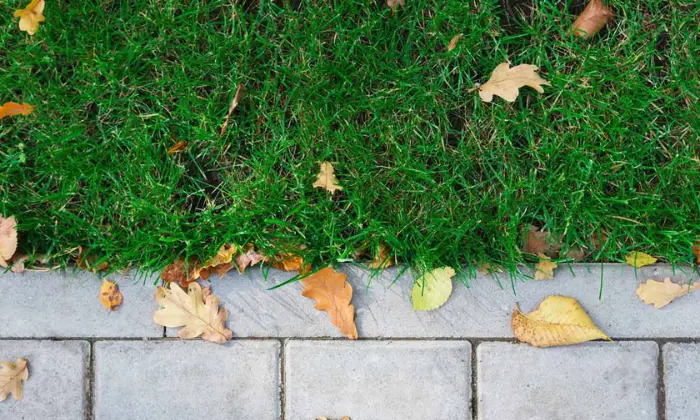
When to overseed lawn in spring fall can rejuvenate and thicken cool season grasses for a lush, healthy lawn. Begin by preparing the lawn, which involves mowing it short and removing any debris or thatch. Aerating the soil will improve seed-to-soil contact and enhance germination.With proper care and attention, overseeding in spring can lead to a thicker, healthier lawn that will thrive throughout the growing season.
Step-by-step process of overseeding
Mowing the lawn: Overseeding in spring Starts by mowing the lawn to a shorter height than usual. This allows the grass seed to come into better contact with the soil for optimal germination. Be sure not to scalp the lawn too short, as this can stress the grass.
Raking and removing debris: Use a rake or dethatching tool to remove any thatch buildup and loosen the top layer of soil. Raking also helps to remove dead grass, debris, and other obstacles that may hinder seed-to-soil contact.
Seeding the lawn: Spread the grass seed evenly over the entire lawn using a seed spreader or broadcast spreader. Pay attention to any bare or thin areas, ensuring thorough coverage.
Spreading fertilizer (optional): If desired, apply a starter fertilizer after seeding to provide nutrients that support seedling growth. Choose a fertilizer specifically formulated for newly seeded areas and follow the application instructions carefully to avoid over-fertilizing, which can harm the young seedlings.
Watering the newly seeded areas: After seeding, water and nutrients the lawn gently but thoroughly to ensure the soil is evenly moistened. Keep the newly seeded areas consistently moist, but not waterlogged, to promote seed germination and establishment. Water lightly multiple times per day if needed, especially in dry or windy conditions.
Tips for effective overseeding
Proper seed distribution: Take care to distribute the grass seed evenly to avoid patchy or sparse areas in the lawn. Pay extra attention to thin or bare spots, ensuring adequate seed coverage for optimal germination and establishment.
Watering schedule: Establish a regular watering schedule to keep the soil consistently moist during the germination and early fall growth stages. Avoid allowing the soil to dry out completely between watering sessions, as this can hinder seed germination and seedling growth.
Monitoring germination and growth: Keep a close eye on the newly seeded areas to monitor germination and seedling growth. Be patient, as germination can take anywhere from 7 to 21 days depending on the grass species and environmental conditions. Continue to provide adequate water and nutrients care as needed.
Best Practices for Successful Overseeding
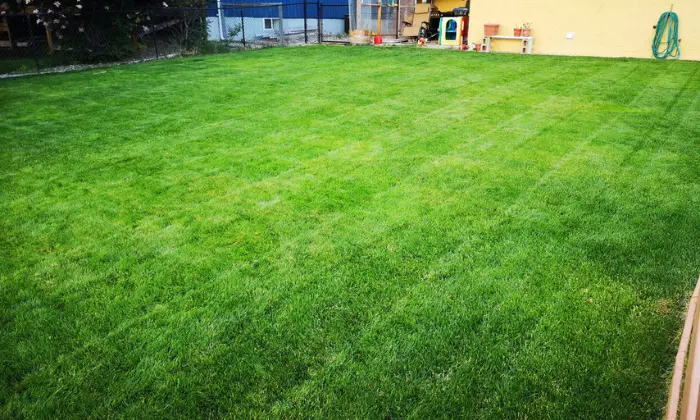
Successful overseeding involves several best practices to ensure optimal results. First, prepare the soil by aerating to alleviate compaction and promote seed-to-soil contact. Next, choose high-quality seed appropriate for your climate and desired lawn characteristics.
Discuss the best time to overseed in spring
The best time to overseed your lawn in spring is typically during the late spring or early fall summer months when soil temperatures reach warm and consistent, and the risk of frost has passed. Aim to overseed your lawn when daytime temperatures consistently reach around 60 to 75°F (15 to 24°C) and soil temperatures reach above 50°F (10°C). This timing allows for optimal seed germination and establishment before the onset of hot summer temperatures.
Maintenance after overseeding
Proper watering and mowing practices:
Watering: After overseeding, maintain a regular watering schedule to keep the soil consistently moist until the new grass seedlings have established roots. Water deeply and infrequently to encourage deep root growth and avoid shallow rooting.
Mowing: Avoid mowing newly seeded areas until the grass seedlings have reached a height of 3 to 4 inches. Once established, gradually resume mowing, ensuring not to remove more than one-third of the grass blade height at a time. Use a sharp mower blade to prevent damage to the delicate seedlings.
Fertilization and weed control
Fertilization: After the new grass seedlings have germinated and established, consider applying a light application of fertilizer to provide nutrients for healthy growth. Use a balanced fertilizer with a formulation specifically designed for newly seeded lawns, and follow application instructions carefully to avoid over-fertilization.
Weed control: Monitor the newly seeded areas for any weed growth and address promptly to prevent competition with the young grass seedlings. Consider applying a post-emergent herbicide to control weeds if necessary, but take care to choose products that are safe for use on newly seeded lawns.
Monitoring progress and troubleshooting common problems
- Monitor the progress of overseeding grass regularly, observing for signs of seed germination, seedling growth, and potential issues such as uneven germination or pest damage.
- Keep an eye out for common problems such as uneven watering, fungal diseases, or pest infestations, and take appropriate action to address them promptly.
- If issues arise, consult with a lawn care professional for guidance on troubleshooting and corrective measures to ensure the success of the overseeding process.
Why Choose Robert’s Complete Care for Overseeding Your Lawn
Expertise and Experience
With years of experience in the lawn care industry, Robert’s Complete Care has the expertise to ensure successful overseeding results. Our knowledgeable professionals understand the unique requirements of overseeding and can provide personalized recommendations tailored to your lawn’s specific needs.
Quality Products
We offer a wide range of high-quality grass seed varieties specially selected for overseeding purposes. Our premium seeds are sourced from trusted suppliers and are known for their superior germination rates, disease resistance, and overall performance, ensuring optimal results for your lawn.
Comprehensive Services
At Robert’s Complete Care, we offer comprehensive overseeding services designed to take the hassle out of lawn care. From soil preparation and seed selection to seeding and post-overseeding maintenance, our team handles every aspect of the overseeding process with precision and care.
Proven Results
Our track record of success speaks for itself. Countless homeowners have trusted Robert’s Complete Care to rejuvenate their lawns through overseeding, and the results speak for themselves thicker, healthier grass that enhances the beauty and value of their properties.
Customer Satisfaction
Customer satisfaction is our top priority at Robert’s Complete Care. We strive to exceed expectations with every overseeding project, delivering exceptional service, reliable communication, and outstanding results that leave our customers delighted with their newly rejuvenated lawns. Choose Robert’s Complete Care for overseeding your lawn and experience the difference that professional expertise, quality products, and dedicated service can make in transforming your lawn into a lush, green oasis.

